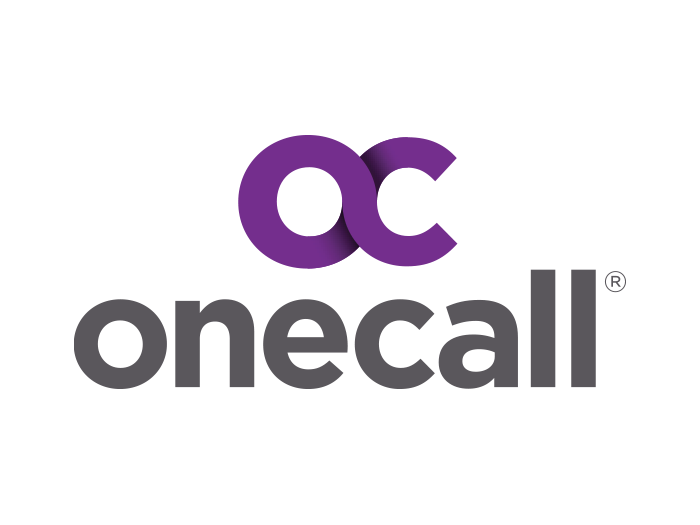D&O Markets Were Already in a Dither. Then Came COVID-19

The current coronavirus pandemic is already impacting the D&O space, and many expect that impact to grow in the coming months, affecting claims, underwriting and market conditions. Two prominent coronavirus-related securities class action lawsuits alleging investors were misled have already been filed against Norwegian Cruise Lines and the vaccine manufacturer Inovio.
Both cases involve industries directly impacted by the pandemic. While businesses across the board are being affected in some way, some experts, like Priya Huskins, senior vice president, management liability at Woodruff Sawyer, think most won’t face lawsuits because of it.
“Coronavirus cases are more likely to be brought against companies that had specific disclosures that are very specifically about and directly related to coronavirus, as opposed to companies where coronavirus is just having an impact to their supply chain,” Huskins said.
Others, however, see a broader impact.
“Insurers are bracing for potentially significant litigation that could arise over the next few months because of COVID-19, whether it’s around disclosure, failure to fully disclose impacts, mismanagement, stock drops, et cetera,” said Christine Williams, CEO at Aon Financial Services Group.
Williams anticipates “more corporate waste, failure to supervise claims, derivative suits, breach of fiduciary duties. … It’s going to be the traditional claims that you see, but I think probably with a little bit more creativity around corporate waste, mismanagement, etc.”
Huskins pointed out that “a stock price drop by itself is not a very good case for a plaintiff. A good case for a plaintiff is a stock price drop plus some evidence that disclosure was imperfect plus insider trading of some kind.”
To prevent such exposure, Huskins recommended that “companies strongly consider closing the trading window for insiders. … This is not a situation in which you want to be second-guessed over somebody’s trade.”
The Real Cost of Lawsuits
Of course, even lawsuits without merit can be costly.

Kevin LaCroix, executive vice president, RT
ProExec, RT Specialty
“What’s facing boards is a plaintiffs’ bar that makes money suing boards,” said Rob Yellen, D&O and fiduciary liability insurance product leader with Willis Towers Watson. “The only question is, do they have a viable suit that they can take far enough along so that they can make money on it?”
Williams agreed. “It’ll be interesting to see how many of those actually stick, but I think the concern is the cost of defending them,” she said.
“Defense costs can add up extremely fast, so even these meritless claims are going to be problematic … all the uncertainty is going to allow a more creative plaintiffs’ bar.”
Emerging Risks in D&O
New D&O risks may emerge as companies change how they do business in response to COVID-19, including workforces suddenly working remotely.
“Cyber is front and center in a lot of people’s minds, making sure that you still have the security in place,” Williams said.
“Particularly in certain classes of business, a staff that’s working from home is transmitting very confidential data that would have been on a stronger network.”
An increased potential may also exist for inappropriate behavior on company time. “By and large, work activity is going to be work activity and personal activity is going to be personal activity, and you hope that people aren’t blending the two,” said Kevin LaCroix, executive vice president at RT Specialty’s RT ProExec division.
“But there certainly could be circumstances where the blurring or blending becomes a problem.”
The regulatory response to COVID-19 could be another area of concern. LaCroix pointed out that regulators are currently “very wary of taking any action that is going to increase the adverse impact on companies that are scrambling to deal with the coronavirus … But there are going to be lots of regulatory issues taken immediately in response to the coronavirus that are definitely going to impact on companies and could result in adverse results and potential D&O claims.”
Exposure to the virus itself can also have D&O implications, especially if senior executives are infected.
“Companies are grappling with a question of how much they need to disclose if executives fall ill,” LaCroix said.
“Those are more business issues than D&O liability issues, although they could translate into D&O claims if an investor were to subsequently claim that the company withheld information about illnesses at the management level or the impact of illnesses on the company’s ability to manage its operations.”
“Many companies are going to be affected by cash flow issues, supply chain interruption issues, and that may force them into bankruptcy. And bankruptcy is a fruitful source of D&O claims,” LaCroix said. “I think, before all is said and done, there will be quite a number of disclosure lawsuits.”
And those lawsuits could keep coming for some time.
“There will be lawsuits probably for months, even after we come out of it, where the allegation is that investors claimed to have been misled about the impact of the coronavirus on company operations or future financial performance,” LaCroix said.
Everyone Is Feeling the Strain
As the crisis drags on, companies not directly affected by COVID-19 may increasingly feel its impacts.
“Companies are experiencing the impact now, but they only have to report on a quarterly basis, and their first-quarter results may not show that much of a change. So it may not be until they give their second quarter results at June 30 that the impact appears. But in the meantime, they may have been making statements about that impact. And that sort of reporting delay could possibly carry into the year, depending on how long the coronavirus outbreak lasts and what the fallout is.”
Other impacts may be drawn out as well.
“In some cases, for the companies themselves, it may be a delayed impact as … they find out whether they’re able to collect on all their receivables and things like that,” LaCroix said. “The business impact could carry on into the future, and the reporting impact certainly could carry on into the future.”
Relying on Coverage Already at Hand
For the moment, at least, most insureds with D&O coverage in place will be well covered.
“We’ve been in a competitive marketplace for 20 years or close to it, and during that time, competition has broadened the scope of coverage, narrowed the exclusions, made the terms and conditions relatively more policyholder-friendly than before,” LaCroix said.

Rob Yellen, D&O and fiduciary liability insurance
product leader, Willis Towers Watson
“So the potential good news is, for many organizations that might experience a D&O claim, if they had D&O cover in place, they’re going to have relatively broad cover to respond, including relatively broad entity liability coverage, but ultimately the insurance companies will make their coverage determinations based on the policy wording and facts and circumstances of each claim.”
LaCroix sees larger questions for lawsuits taking the form of intellectual property or environmental-type claims and for terms and conditions policies, but while the extent of coverage will depend on applicable policy terms and conditions, most policies won’t have broad exclusions that could preclude coverage.
Pricing and Exclusions in a Hard Market
As the pandemic exacerbates an already hardening marketplace, however, that will likely change. One obvious impact will be pricing.
“For the first quarter, it wasn’t unusual to see D&O pricing increases coming in for a public company at 40% if there were some D&O-potential risks,” said Williams. “And that has just significantly increased, because every business is going to be impacted.”
Broader exclusions will likely also be on the table.
“Up until the last few months, D&O generally has been so competitive that if you were to put some types of exclusions on, you would be effectively taking yourself out of competition for that account, because there would be so many alternatives available,” LaCroix said.
“However, the marketplace was already tightening significantly, and now with the disruption of the coronavirus, restrictions that might not have flown in the past may now be unavoidable.”
Williams agreed. “I do think there are going to be insurers who are going to try to put on COVID-19 exclusions, which could be very broad,” Williams said. “I don’t think insurers are going to be looking to change the breadth of the traditional coverage that you get under a D&O policy, but I do think it’s going to be more challenging for certain insureds, and that’s going to continue for the next few months.”
According to LaCroix, several D&O insurers have introduced questionnaires to better understand the pandemic’s impact on companies and their responses.
“I expect that to continue,” LaCroix said. “I expect it to become more widespread, and I suspect there will be a lot more financial underwriting as underwriters seek to determine whether a company that in the past may have been financially solid may become financially weaker and even an insolvency candidate as a result of cash flow interruptions.”
Insureds may also be expected to retain more risk: “Insurers will be asking for clients to have more skin in the game, particularly on retention,” Williams said. “Co-insurance is something else that we’ve been seeing, and the exploration of captives and reinsurance for some larger deals.”
Limited capacity may also require a more innovative approach to coverage. “I think it’s going to be increasingly difficult to build a large program of $500, $600 million of full ABC coverage,” Williams said. “You have insurer capacity potentially going out of the market and not enough capacity coming in. So I think the ways the programs are structured are going to be looking different.”
Regulatory changes may further complicate the situation. “State insurance regulators are very active right now in issuing regulations and requirements having to do with things like cancellations, renewals, extensions and so on,” said LaCroix, who expects such changes to impact the insurance marketplace as a whole, and the D&O marketplace in particular.
What All This Means for Renewals
Combined, these factors could spell challenging renewals.
“Renewals this year are largely going to be difficult,” said Yellen. “There was already enormous pressure on companies for this year’s renewal, and now we have COVID-19 on top of it. … Luckily, so far, we have seen few knee-jerk reactions from U.S. insurers. They seem to be looking at things on a case-by-case basis. For some accounts, the change year-over-year won’t be out of line with last year’s projections.”
Yellen advised insureds to be prepared for renewals, and that includes staying on top of potential claims.
“Today’s D&O products are really well-refined and broad and may encompass things you may not expect,” Yellen said. “It may trigger obligations under the policy that, if not met, could jeopardize coverage, not just for the claim in question but also going forward.”
For insurers, LaCroix urged flexibility, communication, and being mindful of the stresses their clients are facing.
“We need to be proactive not only with respect to claims-related issues, but with respect to basic blocking and tackling on renewal issues and things like that,” LaCroix said.
“Timelines are likely to stretch, and we need to take that into account in the way we interact with our clients in order to give them the time they need, so we don’t wind up running against deadlines or tripping time requirements.” &










